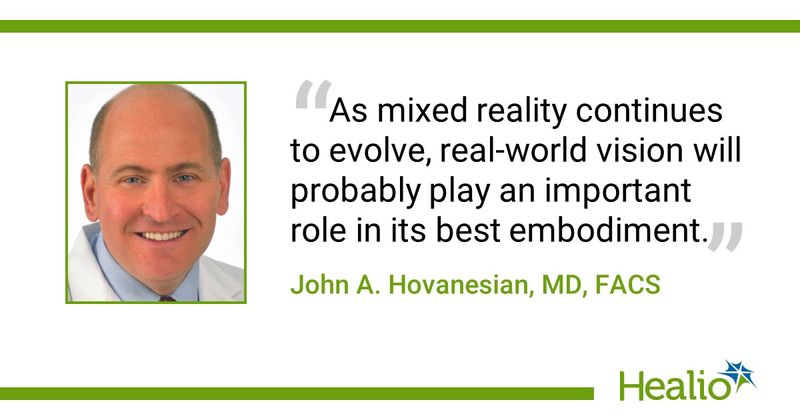BLOG: Will video kill the LASIK stars?
Click Here to Manage Email Alerts
Looking back at the evolution of LASIK since the early 1990s, we see an incredibly safe procedure that has effectively liberated more than 20 million people from corrective lenses, enhancing their lives and improving their appearance.
And yet over those same 20 years, our visual lives have changed dramatically. A study by Common Sense Media showed that today’s average teenager, who is tomorrow’s LASIK patient, spends almost 8 hours per day looking at screens — about half his or her waking hours. And the amount of time teens now spend engaged in LASIK-motivating outdoor activities? Less than an hour per day, according to the National Recreation and Park Association. This fall, Apple will be releasing its Vision Pro mixed-reality headset, the first step toward a digital ecosystem where users continuously wear a vision-enhancing device. If you don’t think this could affect future demand for LASIK, you just don’t know enough about it yet.

The headset itself is expensive at $3,500 (curiously close to the cost of LASIK) and clunky with a large form factor, a wire to an external battery that lasts just 2 hours and only about 100 mostly game apps upon its release. But this first minimally viable product is not even intended to be a commercial success. Future versions of the device will be priced and configured for more mass appeal. Today’s Vision Pro is designed to show Apple’s commitment to a new ecosystem and create a “gold rush” of interest today from app developers who recognize the future potential of mixed reality to change the lives of billions of people.
What if your iPhone or laptop had a virtual screen 180° wide or multiple screens you could control using subtle finger gestures, your voice or just eye movements? With the headset, working at a desk, you could view your screens in a stunning 23 million pixels, or 4K per eye. In the background, you can also see the room around you along with anybody who walks in. Your visitor sees your headset with a realistic-looking image of your eyes on an outward facing screen on the front of the headset. (I want to develop the app that does a virtual cosmetic blepharoplasty on those eyes.)
Go ahead and call your pals with FaceTime while appearing to them as though you’re not wearing a headset at all but rather have a normal or even enhanced appearance. The same happens if you run into a friend in a coffee shop while you’re both wearing your headsets. “Good to see you! Have you lost weight, or are you going to gain 30 pounds if I take my headset off?” Or imagine an end to those awkward moments where someone you know says hello and you can’t remember his name. The headset could give anyone in your contacts a virtual name tag. Maybe unless it’s your ex-spouse. I’m sure there’ll be an app for that too.
For everyone, challenging visual tasks like driving at night or walking on irregular surfaces in dim light will become much safer because the device’s Lidar sensors and high-res cameras can enhance your visual environment. And of course the headset has built-in, customized spectacle lenses for the user, which brings us back to its impact on the vision correction surgery market.
The same people who can today afford LASIK will also find appeal in a mixed-reality device. Sure, the device won’t allow them to wake up and see the leaves on the trees, but if the first thing they reach for in the morning now is a phone, might it not become a headset? The point is that a meaningful number may choose the headset, which by the way has zero surgical risks, over the procedure.
Will there be a saving grace for LASIK? We will certainly always have people who want the visual performance that only sight-enhancing surgery can provide, and that number will not be small. As mixed reality continues to evolve, real-world vision will probably play an important role in its best embodiment. And I really hope that “geek chic” never replaces the beauty of the naked eye.
References:
Time spent outside reduces stress. https://www.nrpa.org/publications-research/park-pulse/time-spent-outside-reduces-stress/. Accessed
June 14, 2023.
Tweens, teens, and phones: What our 2019 research reveals.
https://www.commonsensemedia.org/kids-action/articles/tweens-teens-and-phones-what-our-2019-research-reveals. Published Oct. 29, 2019.
Accessed June 14, 2023.
Collapse
